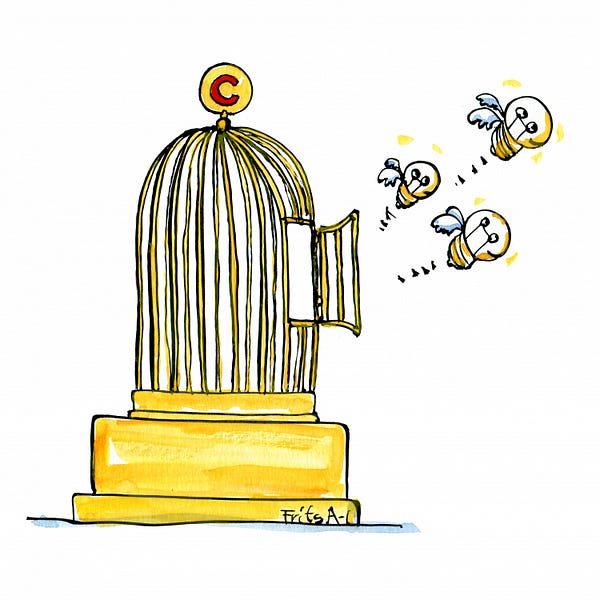The Craftship Workflow

Idea → Prototype → Product
When you’re creating anything, it can feel daunting to try to go from an initial idea to a finished product. We think we have these fantastic ideas for things in our work or personal life, but they suddenly become vague and murky when we sit down and try to actually hash them out on paper.
In my previous post, I wrote about the difficulties in trying to find a balance between creating and planning. In this article, I’ll discuss how to make a more fluid transition between planning and creating. In other words, doing both simultaneously.
Craftship is a termed for the creative work done by someone who practices a trade or handicraft — it is the act of doing. This is exactly what this workflow is about: taking action instead of contemplating taking action.
This workflow is heavily inspired by the UX design lifestyle, as well as agile management, but has been adapted for personal use and general creativity.

Craftship Overview
1. Brainstorming
Before anything, figure out a problem that needs to be solved, or a question that needs to be answered. This doesn’t need to be groundbreaking — it can already have a solution or an answer, instead, try to focus on alternative ideas. Create a hypothesis to solve it and start brainstorming.
Allow yourself to open up when brainstorming, don’t stop yourself from writing anything down, no matter how silly it might seem. Research and study. Look at interesting and obscure books and articles. Try to look at the issue from a completely different point of view.
Start jotting down ideas, try to connect similar ones together. Digital platforms are a great way to coordinate concepts and objectives. Using microblogging platforms like Twitter to write out these ideas is a great idea, whether publicly for receiving feedback, or privately just to have a collection. Utilise #tags or a good search function for organisation.
Don’t go overboard with this, stick to one objective or concept. Trying to execute too many ideas at once will cause you to ultimately not fulfill any properly at all. When you come across a new and exciting train of thought, separate it into it’s own entity. Don’t wait until what you have developed is perfect in any form, settle for good enough and move on to creating.
2. Creating
Once you begin your first draft, the most important thing is to simply do it. Write out the long, technical details from the short, conceptual ideas. Create an outline and fill it in. Don’t allow yourself to become distracted, don’t try to edit the minor details while you’re initially hammering things out. Just do it.
When the first draft is finished, open yourself up to allowing others to help collaborate on it, to give you feedback. Understand how your ideas and intentions are perceived by others. Start making changes to your prototype. Develop cycles of iteration. Figure out what needs to be added or removed.
There are often times when, sometime during the process, you’ll realize that what you’ve created essentially falls flat. Just as it’s important to open up with creating ideas, you also have to open up to discarding things when they don’t work. See if you can pivot what you’ve created into a new direction, explore new ideas that can be worked into it.
3. Review
One of my favorite quotes is by Paul Valéry, which is that a poem is never finished, only abandoned. It’s easy to feel that after the hard work of a few drafts, that you have a completed work. The reality is, though, that everything you make can always be improved upon in some way.
Reviewing what you’ve already created is vitally important to progress forward and improve your skills. Think about how you can repurpose content — not for the sake of milking it, but instead to explore how different mediums could add to how to your ideas.
Would you be able to better explain your blog post as a chapter in a book? Would you be able to better explain an idea if you provided visual graphics? Don’t be afraid of delving deeper into the complexities of something once you have a handle on it.
Using metrics is also helpful, figure out what work people respond to and what they ignore — what separates them? When you figure out what works, double down on it. Invest on effective measures and discard what doesn’t work.
Summary
- Take action with your ideas, don’t wait until they’re perfect to start.
- Iterate on those ideas, make incremental changes in a positive direction.
- Adapt what is useful, disregard what’s ineffective.